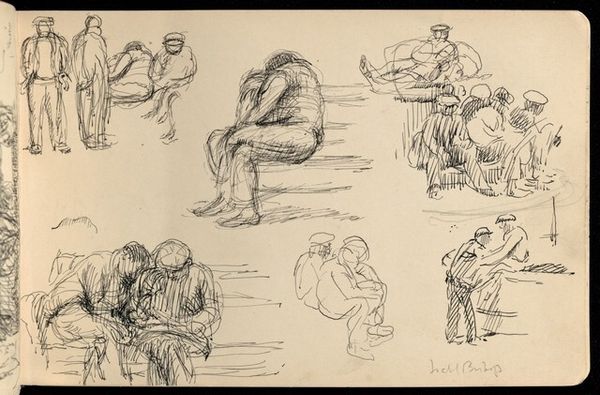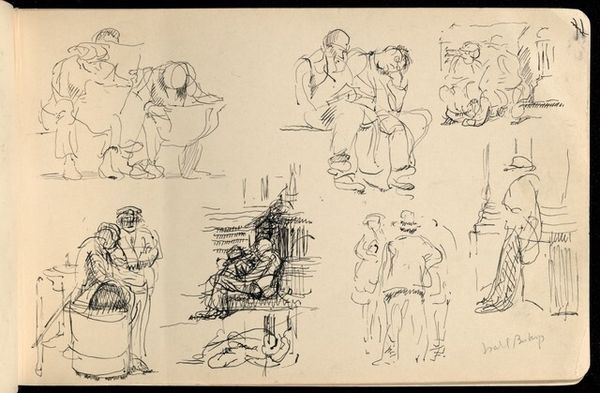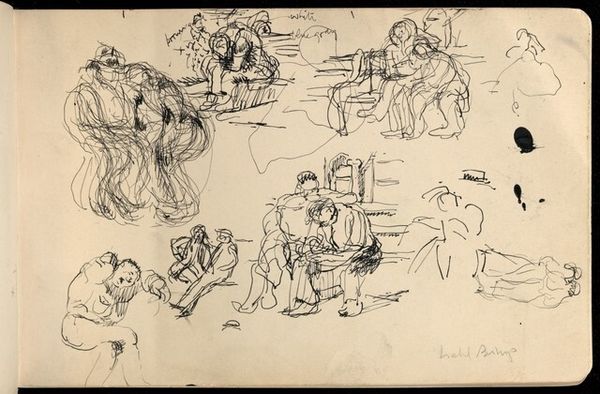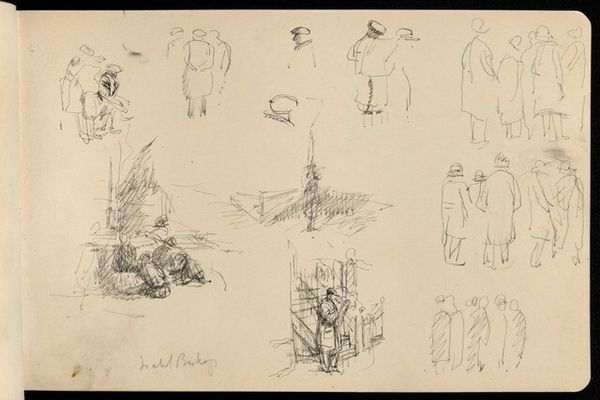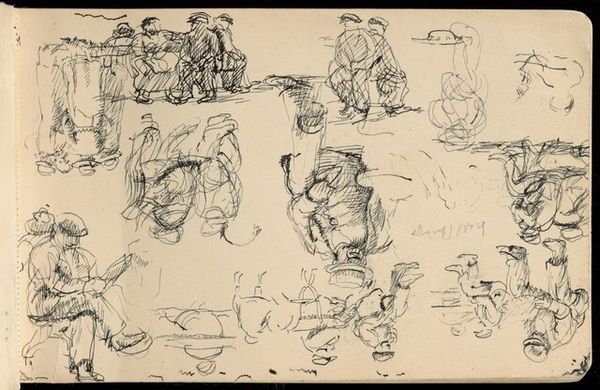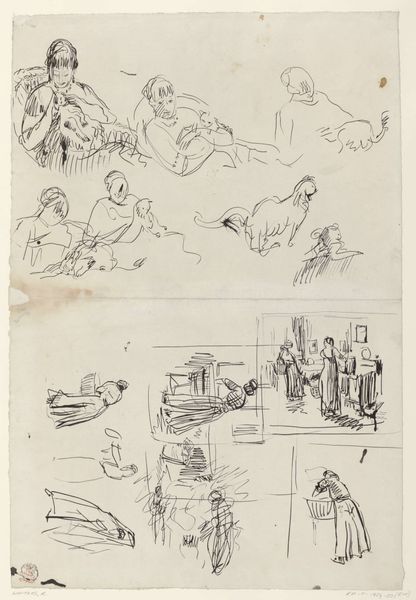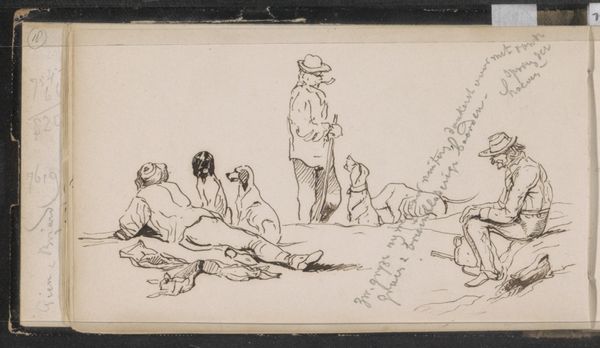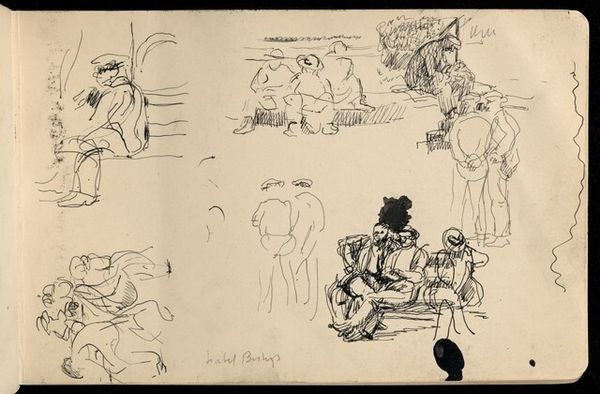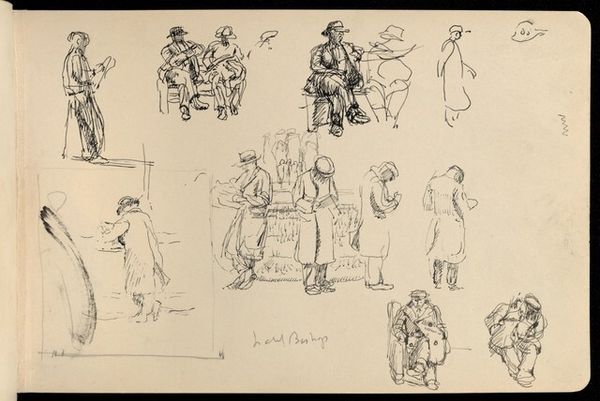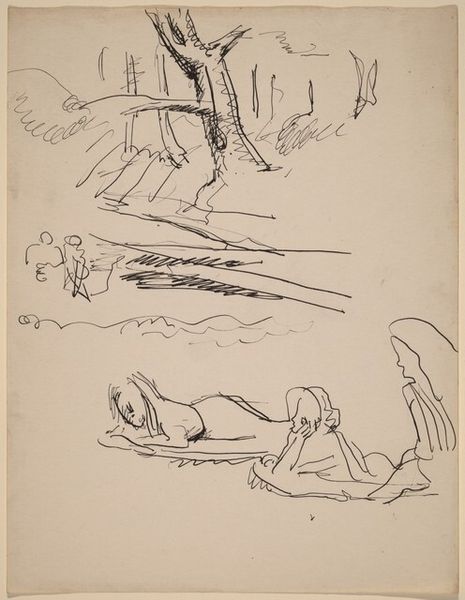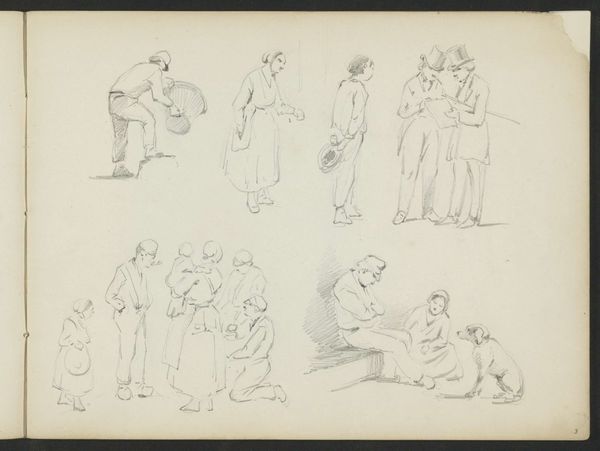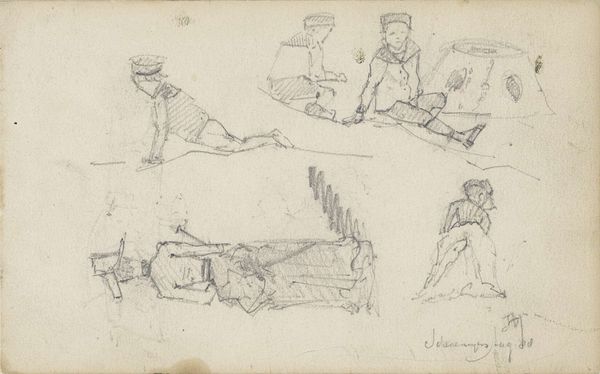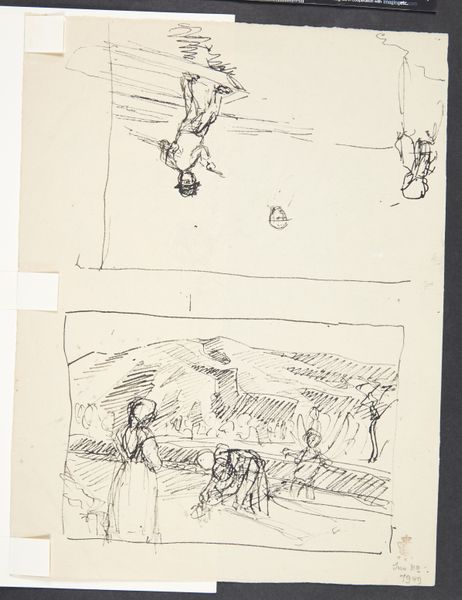
drawing, paper, ink, pencil, pen
#
portrait
#
drawing
#
comic strip sketch
#
narrative-art
#
mechanical pen drawing
#
pen sketch
#
paper
#
personal sketchbook
#
ink
#
sketchwork
#
pen-ink sketch
#
pencil
#
ashcan-school
#
pen work
#
sketchbook drawing
#
pen
#
cityscape
#
genre-painting
#
storyboard and sketchbook work
#
sketchbook art
#
realism
Copyright: National Gallery of Art: CC0 1.0
Curator: So much honesty jumps right off the page, doesn't it? These glimpses from Isabel Bishop’s "Early Sketchbook," probably dating from the late 1920s to mid-1930s, are full of raw, fleeting moments, captured in ink and pencil on paper. Editor: It does feel incredibly intimate. It’s like we’re peering over the artist's shoulder. The scenes of huddled figures, napping bodies, and fleeting interactions—they speak of urban solitude amidst a crowded cityscape. A little melancholy, perhaps? Curator: I think melancholy’s fair, but there’s also a powerful observation happening. Bishop belonged to the Ashcan School, and you really see that commitment here: documenting the everyday lives of ordinary people, without any romanticizing. Her focus wasn't on grand narratives; it was the simple truth of city life. Editor: Exactly! It’s about rendering the quotidian visible, giving a sense of dignity to those who might otherwise be overlooked by more official, celebratory representations. And these quick pen and ink sketches underscore the accessibility of this project. Bishop didn’t need fancy materials to immortalize these characters; all she needed was her keen eye and a willingness to look. Curator: I agree, there's a lack of pretense that resonates powerfully. Think of the figures here. There's a very tender drawing of someone deeply asleep that conveys so much—exhaustion, vulnerability. There's a pair talking that reminds us how often a simple exchange with someone makes our day better. It's all there, these tiny gestures towards bigger stories. Editor: It really exemplifies art's potential to act as a social mirror, reflecting back at us the nuances of shared human experience. And situating this within her "early" period— it really opens a discussion around what Bishop may have carried forward or pushed against when moving to mature projects. It all seems rooted here. Curator: You said it. Rooted in a beautiful, unaffected truth. Editor: Absolutely. A reminder that history is found as much in the sketches as in the grand paintings.
Comments
No comments
Be the first to comment and join the conversation on the ultimate creative platform.
